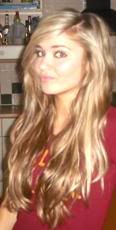Todorov’s theory of Equilibirum
Tzvetan Todorov discovered that folk tales and fairy stories all followed a similar structural pattern. This is known as the classic narrative pattern, and is directly applicable to mainstream films and TV dramas today. The classic narrative pattern works like this – Equilibrium --> Disruption --> Resolution --> Restored order --> New equilibrium.
1. Who are the agents: the protogonist (the main hero who propels the narrative forward) and antagonist (opposing agent)?
The protagonist in this film is obviously Cady as the film is based around her, we are introduced to her straight away and we see her with her family showing us she is the main character, the audience are made to sympathise with her as we she is going through a big change in her life. The antagonist seems to be ‘the plastics’, they are the most popular girls in the school and are shown to be ‘superior’ to everyone else, Damien describes them as "teen royalty", but to the audience they come across that they think they’re better than everyone else and very self-obsessed. Janis and Damien introduces the audience to all 3 of them individually emphasising their ‘importance’, also describing the main one as "evil in human form" emphasising their role as the antagonist.
2. Describe the equilibrium. How is it represented? What kind of camera shots can you identify?
The equilibrium is introduced immediately and is shown to be a nice innocent girl who is very naïve about starting an American high school, the film starts with some close up shot-reverse-shots of Cady talking to her parents focusing on their relationship, this forces the audience to realise she has a good happy relationship with her parents and they get along very well, but the title suggests this may change later on in the film. It also cuts back to an establishing shot showing us her surroundings, the street is a typical leafy homely American street suggesting to us they are quite wealthy as they have a big house and everything looks very nice. She meets Janis and Damien who are her real friends in the film and they guide her about ‘school life’.
3. Is the Disruption/Disequilibrium introduced or hinted at?
The disruption or disequilibrium is not introduced in this clip but it’s hinted at by the introduction of the plastics at 7:27, we can gather they will play a big part in the film and that Cady may be manipulated by them and sucked into their lifestyle as she is vulnerable and as she isn’t used to school life, could be easily influenced.
4. Are there any visual/verbal/aural clues that hint at what the hero's journey might be?
We don’t really get an idea of what the hero’s journey will be from this clip but we can assume that Cady will get caught up with the plastics, this is hinted at when Damien says “Oh you’ll get socialised alright”. Also, we can tell that Cady won't go on a physical journey as she has just moved to America but she will go on a mental/emotional journey in this film.
5. From your knowledge of the film, how will the equilibrium be restored and what will be the new equilibrium?
Throughout the film, we see how Cady gradually changes into one of the plastics, she becomes so obsessed with Regina, her scheme to make her unpopular and being a fake friend, that she becomes a ‘mean girl’ as she acts just like Regina and lets her real friends, Janis and Damien, down. There is a huge disruption when everyone finds out about Cady’s scheme, but the equilibrium is restored when Cady apologises to Regina so there is no longer an antagonist. The new equilibrium is that the plastics all go their separate ways, people are no longer divided into cliques and Cady, Janis and Damien are friends again.

No comments:
Post a Comment